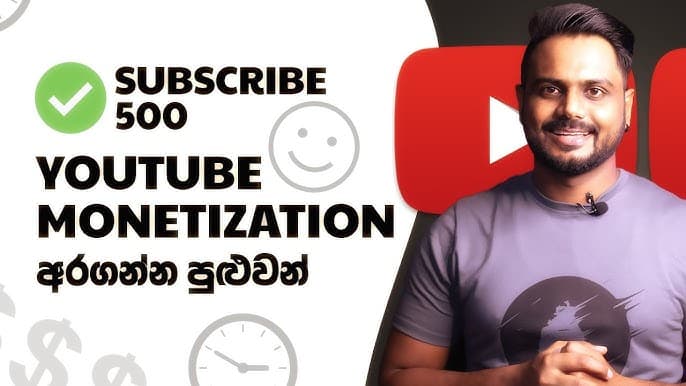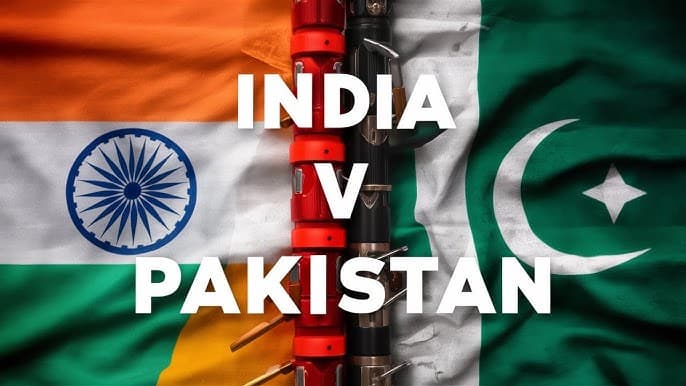
Unlocking YouTube's Potential: Earning in Sri Lanka
summary
Making Money from YouTube in Sri Lanka
YouTube, a global video-sharing platform owned by Google LLC, has emerged as a significant avenue for content creators in Sri Lanka to generate income and build sustainable careers. With over 6.5 million users in the country as of 2023, YouTube ranks among the most popular media platforms, offering creators opportunities to monetize their content through advertisements, sponsorships, and other revenue streams[1][2]. The introduction of the YouTube Partner Program (YPP) in Sri Lanka, facilitated by local organizations like IdeaHell, has further enabled creators to meet monetization requirements, such as achieving 1,000 subscribers and 4,000 watch hours, and earn income from their channels[3][4].
Despite these opportunities, Sri Lankan creators face challenges, including limited access to advanced monetization tools, cultural barriers, and the need to navigate YouTube's strict content guidelines. Additionally, new tax policies, such as an 18% VAT on digital services starting in 2025, may impact earnings[5][6]. However, the growing internet penetration rate of 66.7% and the rise of influencer marketing platforms like fluencr provide creators with avenues to expand their reach and diversify their income[7][8].
Local success stories, such as channels like Wild Cookbook and puduma lokaya, highlight the potential of YouTube as a platform for cultural expression and economic empowerment in Sri Lanka[9]. By leveraging strategies like optimizing content for YouTube's algorithm, collaborating with influencers, and utilizing local support systems, creators can maximize their monetization potential and turn their passion into a viable career[10][11].
As YouTube continues to grow in Sri Lanka, it offers a unique blend of challenges and opportunities for content creators, making it a dynamic and evolving space for digital entrepreneurship in the region[12][13].
Getting Started on YouTube
YouTube, owned by Google LLC, has become one of the most popular video platforms in Sri Lanka, with a growing number of users and content creators in recent years[1][2]. For aspiring YouTubers in Sri Lanka, understanding the basics of creating and monetizing a channel is essential to turning content creation into a viable career option[3].
Creating a YouTube Channel
To begin, creators must first set up a YouTube channel. This involves creating a Google account, customizing the channel's branding, and uploading content. Many Sri Lankan creators seek guidance on how to create and optimize their channels, with resources such as Sinhala-language courses available to help them navigate the process[4]. These courses often cover topics like channel setup, video production, and YouTube SEO techniques to improve visibility and engagement[4].
Understanding YouTube Monetization
Monetizing a YouTube channel in Sri Lanka requires meeting specific eligibility criteria set by the YouTube Partner Program (YPP). As of 2024, creators must have at least 1,000 subscribers and either 4,000 watch hours in the past 12 months or 3 million views on YouTube Shorts[5][6]. Once these thresholds are met, creators can apply for the YPP and start earning revenue through ads, memberships, and other monetization features[5][3].
IdeaHell, a multi-channel network (MCN) based in Colombo, has been appointed as the first and only YouTube MCN in Sri Lanka, providing local creators with resources and support to monetize their content effectively[7][3]. This development has opened new opportunities for Sri Lankan YouTubers to turn their passion into a sustainable career[3].
Tips for Success
To maximize their chances of success, creators should focus on audience retention, which measures how long viewers watch their videos. High retention rates can lead to increased watch hours and better recommendations from YouTube's algorithm[8]. Additionally, optimizing video thumbnails, titles, descriptions, and tags can improve discoverability and attract more viewers[9].
Understanding key metrics like CPM (Cost Per Mille) and RPM (Revenue Per Mille) is also crucial for creators looking to boost their ad revenue. CPM reflects the earnings from ad-monetized playbacks, while RPM accounts for YouTube's 45% cut, providing a clearer picture of actual earnings[10].
By leveraging these strategies and staying informed about YouTube's policies and updates, Sri Lankan creators can build successful channels and tap into the platform's growing potential in the region[11][12].
Monetization on YouTube
Monetization on YouTube has become a significant opportunity for content creators in Sri Lanka, especially with the expansion of the YouTube Partner Program (YPP) in recent years. The program allows creators to earn revenue through advertisements, fan funding, and other monetization features, provided they meet specific eligibility criteria[13][14][15].
Eligibility Requirements
To qualify for the YouTube Partner Program, creators must meet certain thresholds. As of 2023, these include having at least 500 subscribers, 3 valid public uploads within the last 90 days, and accumulating 3,000 watch hours over the past 12 months[13][5][16]. These requirements aim to ensure that creators produce consistent and engaging content before they can monetize their channels.
Expansion of the YouTube Partner Program in Sri Lanka
Sri Lanka was recently recognized as a "Level up eligible country," enabling local creators to apply for monetization through the YPP[17]. However, some features, such as channel memberships, Super Chat, and Super Stickers, are not yet available in the country, which has impacted potential earnings for creators[17]. Despite this, the expansion of the program has opened new career opportunities for Sri Lankan YouTubers, allowing them to turn content creation into a viable profession[3][18].
Challenges and Opportunities
While the YPP offers significant earning potential, Sri Lankan creators face challenges such as limited access to advanced monetization tools and a lack of technical and marketing knowledge[1]. Additionally, the introduction of new tax policies, including VAT on digital services, may affect creators' earnings[19][20]. However, collaborations with influencers and cross-platform promotions can help creators expand their reach and increase their chances of success[21].
Impact on Sri Lankan Creators
The growing popularity of YouTube in Sri Lanka has inspired many young individuals to pursue content creation as a full-time career[2]. Studies have shown that YouTube is increasingly being used for educational purposes, with students at institutions like Sabaragamuwa University adopting the platform for learning[22]. This trend highlights the platform's potential not only for entertainment but also for education and skill development in Sri Lanka.
Challenges and Opportunities for Sri Lankan Creators
Challenges
Cultural and Social Barriers
Sri Lanka's deeply rooted cultural norms and traditions present unique challenges for content creators, particularly when addressing topics considered taboo, such as sensuality, pre-marital sex, or LGBTQ+ rights. These societal expectations often limit the scope of content that creators feel comfortable producing, as they risk facing backlash or ostracization from conservative audiences[23][24][25]. Additionally, the hierarchical structure of Sri Lankan society, which traditionally prioritizes the opinions of elders, can further restrict creative freedom, especially for younger creators[23].
Digital Literacy and Misinformation
Despite the growing internet penetration rate of 66.7% in Sri Lanka, digital literacy remains a significant challenge. Misinformation and hate speech are prevalent on social media platforms, creating a hostile environment for creators who aim to produce responsible and inclusive content[26]. The lack of widespread digital literacy also means that many potential viewers may not fully understand or engage with monetized content, limiting its reach and impact[26].
Monetization Requirements
To qualify for YouTube monetization, creators must meet specific eligibility criteria, including having 1,000 subscribers and 4,000 watch hours. For many Sri Lankan creators, especially those in rural areas where 80.6% of the population resides, meeting these requirements can be daunting due to limited access to resources, internet connectivity, and audience reach[27][6].
Opportunities
Growing Internet and YouTube Penetration
Sri Lanka's internet user base has grown significantly, with 14.58 million users as of January 2023, representing 66.7% of the population[28]. YouTube, in particular, has become a dominant platform, reaching nearly 6.5 million people and ranking third in media reach behind traditional TV channels like Derana and Hiru[29]. This widespread adoption of YouTube presents a lucrative opportunity for creators to tap into a large and diverse audience.
Monetization Through IdeaHell
For the first time in Sri Lanka, local content creators can monetize their YouTube content through IdeaHell, a Sri Lankan company that provides a 360' solution for content creation. IdeaHell offers creators access to digital marketing teams, direct sponsorships, partnerships, and product placements, enabling them to supplement their YouTube income and turn content creation into a viable career[30][31][32].
Niche Content and Cultural Representation
Sri Lanka's rich cultural diversity, with its mix of Sinhalese, Tamil, and Muslim communities, offers creators the opportunity to produce niche content that resonates with specific audiences. By addressing cultural nuances and exploring underrepresented topics, creators can foster greater social cohesion and attract dedicated viewership[33]. Additionally, the global interest in Sri Lanka's unique traditions and landscapes provides a platform for creators to showcase their heritage to an international audience[34].
Influencer Marketing and Collaborations
The rise of influencer marketing platforms like fluencr has opened new avenues for Sri Lankan creators to collaborate with brands and businesses. These partnerships not only provide additional revenue streams but also help creators build their personal brands and expand their reach[35].
Government and NGO Support
Initiatives like GEM (Gender Equality in Media) provide training and production grants for gender-sensitive reporting, encouraging creators to produce content that promotes inclusivity and social change[36]. Such support can empower creators to tackle sensitive topics and contribute to a more equitable media landscape.
Strategies for Maximizing Monetization
Diversifying Revenue Streams
Beyond ad revenue, creators in Sri Lanka can explore additional monetization options such as sponsorships, product placements, and partnerships with local brands. Platforms like IdeaHell offer support by connecting creators with direct revenue sources, including sponsors and advertisers[31]. Additionally, YouTube Premium revenue provides an opportunity to earn from subscribers who watch content ad-free[37].
Optimizing Content for YouTube's Algorithm
To maximize monetization on YouTube, creators must focus on optimizing their content to align with YouTube's algorithm. This includes creating engaging, high-quality videos that cater to audience preferences and trends. Utilizing tools like YouTube Studio to monitor analytics such as watch hours, subscriber counts, and audience retention can help creators refine their content strategy[38][8]. Additionally, leveraging AI-powered tools for scriptwriting and video editing can enhance the quality and consistency of uploads, which are critical for maintaining viewer interest and boosting watch time[39].
Leveraging YouTube Shorts and Long-Form Content
With the introduction of YouTube Shorts, creators in Sri Lanka have a new avenue to grow their audience and monetize their content. Shorts require less production time and can quickly go viral, making them an effective tool for increasing visibility. However, creators should also focus on long-form content to meet the 3,000 watch-hour requirement for monetization[13][40]. Balancing both formats can help creators maximize their reach and earnings.
Collaborating with Influencers and Cross-Promotion
Collaborating with influencers or other YouTubers in the same niche can significantly expand a creator's audience. Cross-promoting content across social media platforms like Facebook, Instagram, and Twitter can also increase visibility and drive traffic to YouTube channels[21]. These strategies are particularly effective in Sri Lanka, where social media usage is growing rapidly, with over 7.20 million active users[11].
Understanding RPM and CPM Rates
Revenue Per Mille (RPM) and Cost Per Mille (CPM) are critical metrics for understanding ad revenue. RPM reflects the earnings after YouTube's 45% cut, while CPM represents the amount advertisers pay per 1,000 views. Factors such as audience location, content niche, and market demand influence these rates. For example, Sri Lanka's RPM in 2024 is approximately '3.42 ($4.06), making it a viable market for monetization[41][42]. Creators can boost their earnings by targeting high-CPM niches and optimizing their content for global audiences.
Maintaining Consistency and Reliability
Consistency in uploading content is crucial for maintaining monetization eligibility. Once accepted into the YouTube Partner Program, creators must continue to meet platform standards, such as maintaining watch hours and subscriber counts. YouTube prioritizes reliable channels, which are more likely to be recommended to viewers[8].
By implementing these strategies, creators in Sri Lanka can maximize their monetization potential and turn their YouTube channels into sustainable career options[3][31].
Role of Local Platforms and Organizations
Local platforms and organizations in Sri Lanka have played a pivotal role in enabling content creators to monetize their YouTube channels and build sustainable careers. One of the most significant developments is the introduction of YouTube monetization in Sri Lanka, which was made possible through the efforts of organizations like IdeaHell. As the first and only multi-channel network (MCN) of YouTube in Sri Lanka, IdeaHell has been instrumental in lobbying for monetization rights and providing creators with the necessary tools, strategies, and resources to succeed on the platform[32][43][7].
IdeaHell, a collaborative creator space with a fully equipped 20,000 sq. ft. studio in Colombo, has become a hub for content creators, offering them access to professional equipment, mentorship, and marketing support[7][44]. This initiative has opened up new opportunities for Sri Lankan creators, who previously lacked the technical and marketing knowledge to thrive on YouTube[1].
In addition to IdeaHell, other local organizations and networks have also contributed to the growth of the creator economy in Sri Lanka. For instance, the Lankan Angel Network (LAN), a venture capital firm, has been actively funding and supporting high-growth startups, including those in the digital content space[45]. Similarly, platforms like fluencr have emerged as one-stop solutions for influencer marketing, empowering both influencers and businesses to collaborate effectively[35].
The expansion of the YouTube Partner Programme (YPP) to Sri Lanka has further bolstered the ecosystem, allowing creators to access fan funding and shopping features[18]. However, challenges remain, such as the unavailability of certain monetization features like channel memberships, super stickers, and super chats, which impact earnings[17]. Despite these limitations, the efforts of local platforms and organizations have laid a strong foundation for Sri Lankan creators to monetize their content and turn their passion into a viable career[43][46].
Collaborations with influencers and cross-platform promotions have also been encouraged to help creators reach wider audiences and increase their content's viral potential[21]. As the digital landscape in Sri Lanka continues to evolve, these local initiatives are expected to play an even greater role in shaping the future of content creation and monetization in the country[47].
Success Stories
The rise of YouTube as a platform for content creation has opened new opportunities for Sri Lankan creators to turn their passions into sustainable careers. Over the past few years, several Sri Lankan YouTubers have gained significant traction, building large audiences and monetizing their content successfully.
Popular Channels and Their Impact
Some of the most influential YouTube channels in Sri Lanka include Wild Cookbook, TV Derana, Sri Lanka Cricket, Swarnavahini TV, and Hiru TV, which have amassed millions of subscribers and views[48]. These channels span diverse genres, from cooking and entertainment to sports and news, showcasing the versatility of Sri Lankan content creators. Additionally, channels like puduma lokaya have gained popularity for their focus on health, beauty, science, and astrology, reflecting the growing interest in niche content[48].
Monetization and Career Opportunities
For many Sri Lankan creators, YouTube has become a viable career option. With the introduction of the YouTube Partner Program (YPP), creators can now monetize their content by meeting specific eligibility criteria, such as having 1,000 subscribers and 4,000 watch hours in the past year[6][49]. This has enabled creators to earn income through ad revenue, sponsorships, and product placements[31].
Local initiatives, such as those by IdeaHell, have further supported creators by providing digital marketing expertise and connecting them with direct revenue sources like sponsorships and partnerships[31][30]. This has empowered creators to focus on producing high-quality content while leveraging professional support to maximize their earnings.
Inspiring Stories of Growth
Many Sri Lankan YouTubers have shared their journeys of growth, highlighting how they turned their hobbies into profitable ventures. For instance, creators like Suneth Udayarathna, known for his musical content, have gained recognition for their unique contributions to Sri Lankan culture[50]. Similarly, creators focusing on local culture, such as showcasing the hospitality and daily life in Sri Lankan villages, have resonated with both local and international audiences[51][52].
The success of these creators has not only inspired others to pursue content creation but has also highlighted the potential of YouTube as a platform for cultural expression and economic empowerment in Sri Lanka[53][54].
Challenges and Future Prospects
Despite the growing success stories, challenges remain, particularly for new creators who lack technical and marketing knowledge[1]. However, with increasing support from local organizations and the global reach of YouTube, the future looks promising for Sri Lankan content creators aiming to make a mark on the platform[31][55].
These success stories underscore the transformative power of YouTube in Sri Lanka, offering a platform for creativity, cultural exchange, and financial independence.
Legal and Ethical Considerations
Social Media Regulation in Sri Lanka
Sri Lanka has been exploring measures to regulate social media platforms, including YouTube, to address concerns related to online content moderation. In January 2023, President Ranil Wickremesinghe announced plans to introduce legislation similar to Singapore's Social Media Regulation Act, aiming to establish stricter oversight over platforms like YouTube and Facebook[56]. This move reflects ongoing efforts to balance freedom of expression with the need to curb misinformation and harmful content[57].
Taxation on Digital Services
Starting April 1, 2025, Sri Lanka will implement an 18% Value Added Tax (VAT) on digital and electronic services provided to consumers, including YouTube monetization earnings. This tax reform aligns Sri Lanka's tax system with global standards and is expected to impact content creators who rely on digital platforms for income[58][20][59]. Experts, such as Prof. Rohan Samarajiva, have highlighted the potential implications of these tax policies on the digital sector, emphasizing the need for creators to adapt to the new financial landscape[19].
Ethical Content Creation and Monetization
YouTube's monetization policies require creators to adhere to strict guidelines to maintain eligibility for revenue generation. Content must comply with YouTube's community standards, and creators risk losing monetization privileges if their videos violate these rules[8]. In Sri Lanka, where social media is increasingly preferred as a news source, ethical content creation is crucial to maintaining trust and credibility among audiences[60].
Additionally, while Sri Lanka has been recognized as a "Level up eligible country" for YouTube monetization, local creators still face limitations, such as the unavailability of features like channel memberships, super stickers, and super chats. These restrictions impact earnings potential, prompting discussions about how to advocate for expanded monetization options for Sri Lankan creators[17].
Opportunities for Local Creators
Despite regulatory and tax challenges, Sri Lankan content creators have new opportunities to monetize their work through platforms like IdeaHell, which connects creators with sponsorships and partnerships to supplement their YouTube income[31][3]. This development marks a significant step in empowering local creators to turn their passions into sustainable careers while navigating the legal and ethical landscape of digital content creation.
Tips for Aspiring YouTubers
Aspiring YouTubers in Sri Lanka have a growing opportunity to turn their passion for content creation into a sustainable career, especially with the increasing popularity of YouTube in the country[1]. However, success on the platform requires more than just uploading videos.
Collaborate with Influencers
Partnering with influencers or other YouTubers in your niche can significantly boost your channel's visibility. Collaborations expose your content to a wider audience and increase its potential to go viral[21].
Promote Across Platforms
Sharing your YouTube videos on other social media platforms and websites can help you reach a broader audience. Cross-promotion is an effective strategy to increase views and engagement[21].
Leverage the YouTube Partner Program
The YouTube Partner Program offers creators multiple ways to monetize their content, including through ads, Shorts, live streaming, and long-form videos. Once eligible, creators can also explore YouTube Shopping, which allows fans to purchase products directly from their videos, providing an additional revenue stream[61].
Focus on Quality and Originality
Studies have shown that Sri Lankan YouTube content often lacks originality and creativity, which are key to standing out on the platform. Aspiring creators should focus on producing high-quality, original content that resonates with their audience[62].
Utilize Local Support Systems
For the first time in Sri Lanka, local content creators can monetize their YouTube channels through partnerships with Sri Lankan companies like IdeaHell. These companies provide support, including digital marketing, sponsorships, and product placements, to help creators supplement their income[3][30][31].
Understand Your Audience
Sri Lanka's multicultural society presents unique challenges and opportunities for content creators. Understanding the cultural and social values of your audience can help you create content that resonates with them and fosters engagement[33][63].
Stay Updated on Trends
The digital landscape in Sri Lanka is rapidly evolving, with a significant increase in internet and social media usage. Staying updated on trends and adapting your content strategy accordingly can help you stay relevant and grow your channel[64][11].
By following these tips and leveraging available resources, aspiring YouTubers in Sri Lanka can increase their chances of success and turn their passion into a profitable career.


